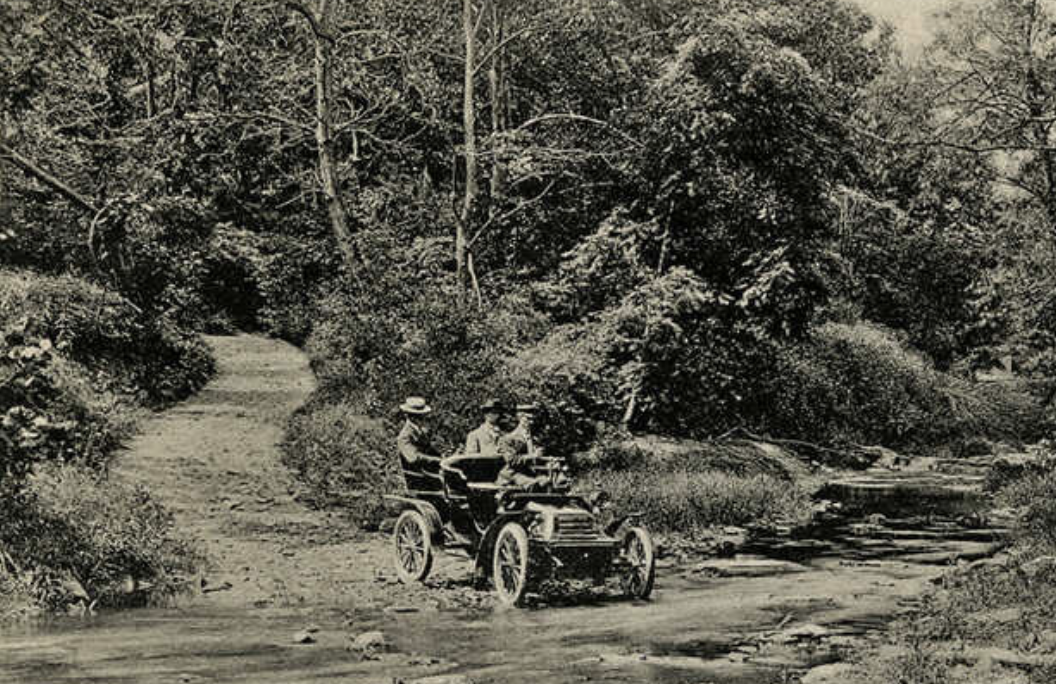The South Mountain Reservation has remained a “green island amid a sea of urbanization” for over a century, serving as an amazing recreational area with winding, scenic trails and a beautiful reservoir. A go-to spot for families and frequent hikers, the Reservation is a place that unites the community in their admiration for nature. It is a place for people of all backgrounds and ages, and nowhere is that clearer than in the Fairy Trail, located on the Rahway Trail near the Locust Grove entrance. The trail was created by Ojibway, a special education teacher who, as a child, had a personal fascination with fairies. Using biodegradable materials, she constructed small houses and furniture, also inspiring others to follow suit and add to the trail of curiosities. This trail and its miniature structures have something for everybody in the community, providing a combination of the picturesque natural scenery with curious little structures that can pique the interest of children.
The Reservation is a 2,110-acre plot of public land, over half of which is in Millburn Township, making it the largest park in Essex County. Its hills, rivers, and woodlands have all been preserved primarily in their natural state. Along the Reservation’s 50 miles of trails, one can witness views of New York City, a dramatic 25-foot waterfall at Hemlock Falls, (shown right), the cascade of Maple Brook in the deep woods, and millponds, streams, picnic areas and open fields in the interior valley.
Behind South Mountain’s beautiful scenery are local events woven into the fabric of American history. The presence of the early Lenape Indians lives on in the name given to the Lenape Trail and the Watchung ridges of New Jersey, the first and second of which form the Reservation’s eastern and western boundaries. To the Lenape, the “Watchung” were “the high hills.” In addition, the Reservation has a history of grain, lumber and paper mills that were built along the Rahway River.
The Revolutionary Era
During 1779-80, the Revolutionary War was centered here. The eastern ridge, with its easily defendable passes, protected the Continental Army’s encampment at Morristown. Washington Rock Lookout was the location of Beacon Signal Station 9, one of 23 beacons built by General Washington for the observation of British troops movements on Staten Island and Manhattan. It was from this outlook that, on June 23, 1780, the Essex County and Newark Militias were first warned that the British had launched an attack westward. In a pincer movement designed to gain access to Hobart Gap, Hessian troops fought bitterly along Vaux Hall Road while the British advanced along Galloping Hill Road before being repelled, the Hessians at the base of the mountain and the British in Millburn (then Millville). Washington Rock served again as a lookout for the Army when recommissioned during the War of 1812.
Development of the Reservation

Automobiling through the Reservation circa 1905
South Mountain Reservation was the last public work to receive the attention of Frederick Law Olmsted, the father of landscape architecture in the United States. Olmsted believed in nature’s ability to heal and inspire people living in a city environment. After seeing the beautiful parks of England and France, he became a vigorous advocate for city parks. As he did in New York’s Central Park, Olmsted’s intent was to make nature’s beauty and greenery available to all people. The Essex County Park Commission (the first in the nation) was permanently established in 1895 and soon began purchasing private lands for the Reservation, making Essex County the largest benefactor of the park. It took decades to complete all the purchases and develop the park.
To increase the variety of vegetation, the forest was thinned according to plans developed by the Olmsted Brothers firm, with Olmsted’s stepson, John C. Olmsted, doing most of the design work. Massive plantings of mountain laurel, wild azalea, dogwood, and rhododendron were set out. Hemlocks, white pine, various oaks, tulip trees, beech and other evergreens were reintroduced. Much of the construction work—trails, foot bridges, and shelters — was carried out by the Civilian Conservation Corps in the 1930’s.